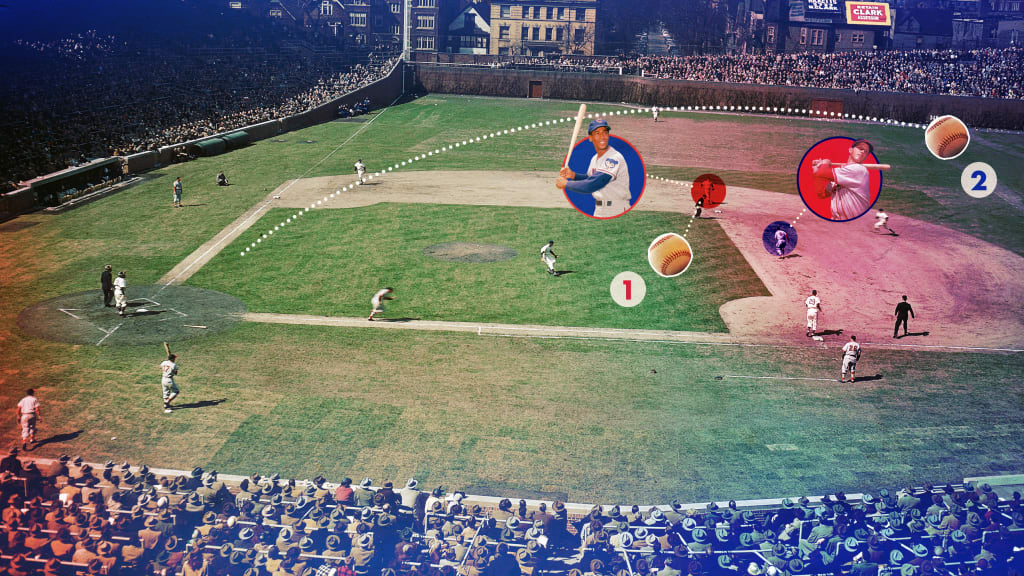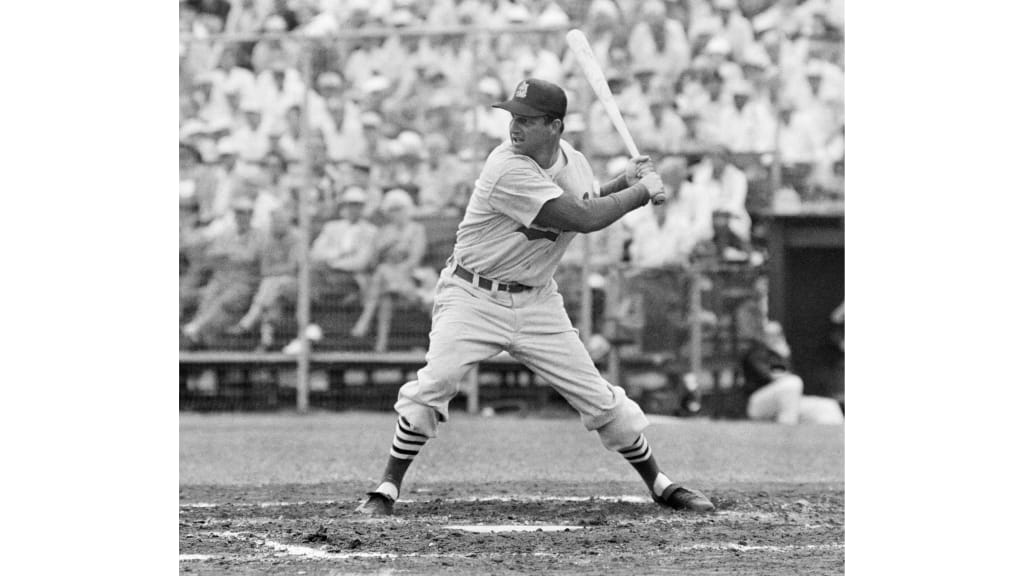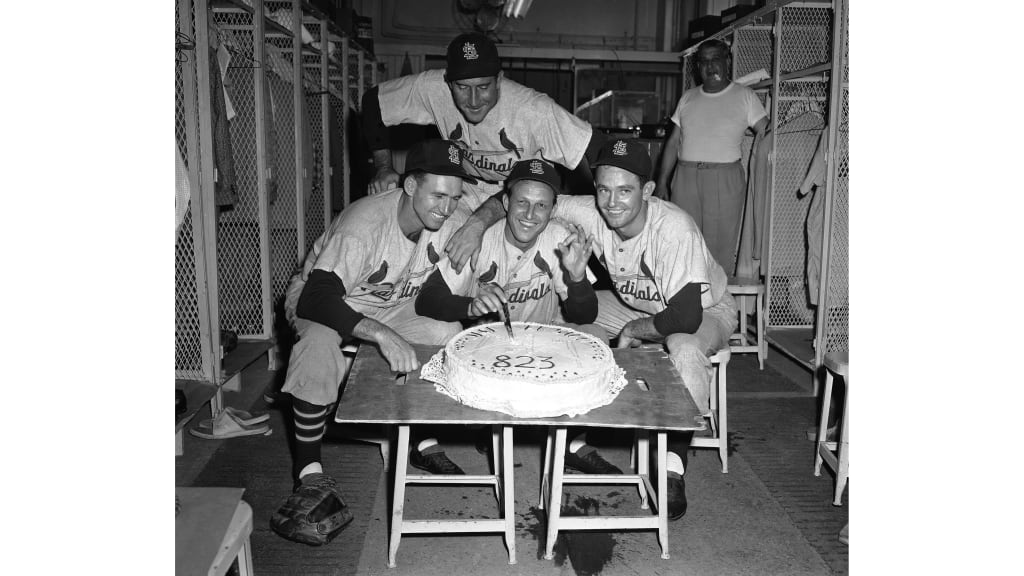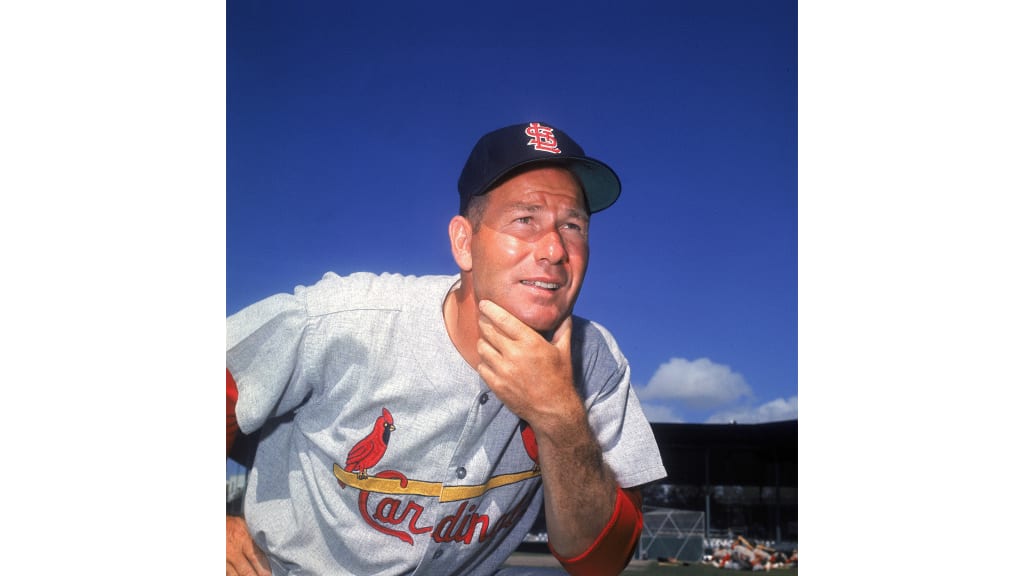
We all know how a game of baseball works: A pitcher throws a ball to a batter who tries to hit it. If he puts it in play, the fielders then try to catch it, and maybe they'll toss it around to a couple of their teammates. After they've done that a sufficient amount, the ball goes back to the pitcher, a new hitter steps up and the whole thing repeats.
You'll notice that at every point in that process, there's only one baseball in use at a time. It's sort of central to the whole thing.
But one time, during a game on Tuesday, June 30, 1959, between the Cubs and Cardinals at Wrigley Field, the old order broke down and chaos reigned: Two balls found their way into play at the same time.

One can only imagine the lack of import surrounding this Tuesday afternoon game. The Cubs hadn't had a winning season in over a decade, even with Ernie Banks in the middle of his prime. The Cardinals had Stan Musial, but still hadn't been to the postseason since 1946. Both teams entered with losing records and -- spoiler alert -- both would end the season in the bottom half of the National League standings.
So, it was likely a surprise when, in the middle of the fourth inning, history broke out.
The Cardinals led, 2-1, with one out and no one on in the top of the fourth inning. Musial was at the plate and had worked the count to 3-1 on Cubs starter Bob Anderson. According to the box score, here's what happened next: Musial drew a walk, then got tagged out between second and third after trying to advance on a wild throw.
But that's only half the story, at most.
Ball four to Musial had sailed to the backstop, narrowly missing Musial's bat on the way by. The Cubs all thought it was a foul ball, but umpire Vic Delmore never ruled the ball dead or called time.
Cubs catcher Sammy Taylor began arguing with the umpire while Musial headed toward first base. Anderson came in from the mound to join the debate. Sometime early in the argument, Delmore inadvertently gave Taylor a new baseball. The problem with that, of course, is that the ball boy had already retrieved the original ball -- the one that still wasn't ruled out of play -- and rolled it toward Pat Pieper, the public address announcer.

Cubs third baseman Al Dark, not sure what the ruling on the field was, ran to the backstop to retrieve the original (still live) ball. Musial, meanwhile, decided to try to steal second during the commotion.
Anderson saw what Musial was trying to do and grabbed the new ball from his catcher's glove. Dark caught on at around the same time, which meant that two different baseballs wound up sailing toward second base in an attempt to catch Musial.
Anderson's throw sailed over the second baseman's head and into the outfield. Dark's throw was better -- a one-hopper to Banks.
Unaccustomed to the dynamics of two balls in play at once, Musial saw Anderson's throw rolling toward center field and reacted, immediately popping up and heading toward third base ... at which point Banks, still holding the original ball, tagged him out.
Musial was justifiably confused. “To me, the funniest thing was watching Musial ... wandering around there and [asking], 'What the hell is going on here?'” Anderson said.
Of course, Cardinals manager Solly Hemus wasn't laughing. Both he and Cubs manager Bob Scheffing spent 20 minutes arguing with the umpiring crew. By the time the dust settled, Musial was still out, and the Cardinals played the rest of the game under protest. (St. Louis ultimately overcame the controversy to win, 4-1, rendering their protest irrelevant.)

But while two balls in play was chaotic enough, what if there were actually three balls involved in the play? Yes, there exists a third-ball theory.
Where the original story has Dark intercepting the ball before it reached Pieper, the public address announcer, Anderson has a different version of events.
He claims the ball reached Pieper, who immediately deposited it in a large bag filled with baseballs. Instead of retrieving the ball directly, Dark approached the announcer. "Al came over and said, ‘Don’t say anything, Pat … Give me a ball,’" Anderson said. "It may not have been the same ball.”
Unfortunately, there is no way to know for sure whether the Two Balls in Play Incident was actually the Three Balls in Play Incident. While video once existed of the game from a Cubs highlights package, it was apparently taped over so the network could record another program.
Regardless of the precise number of balls involved, it's a situation we're unlikely to ever see again, especially with the advent of replay review and multiple camera angles on every play.
Inadvertently anticipating advances in technology with typical pre-2016 Cubs fatalism, Anderson was more right than he knew when he observed, "Only with the Cubs at that time could something like that happen."
